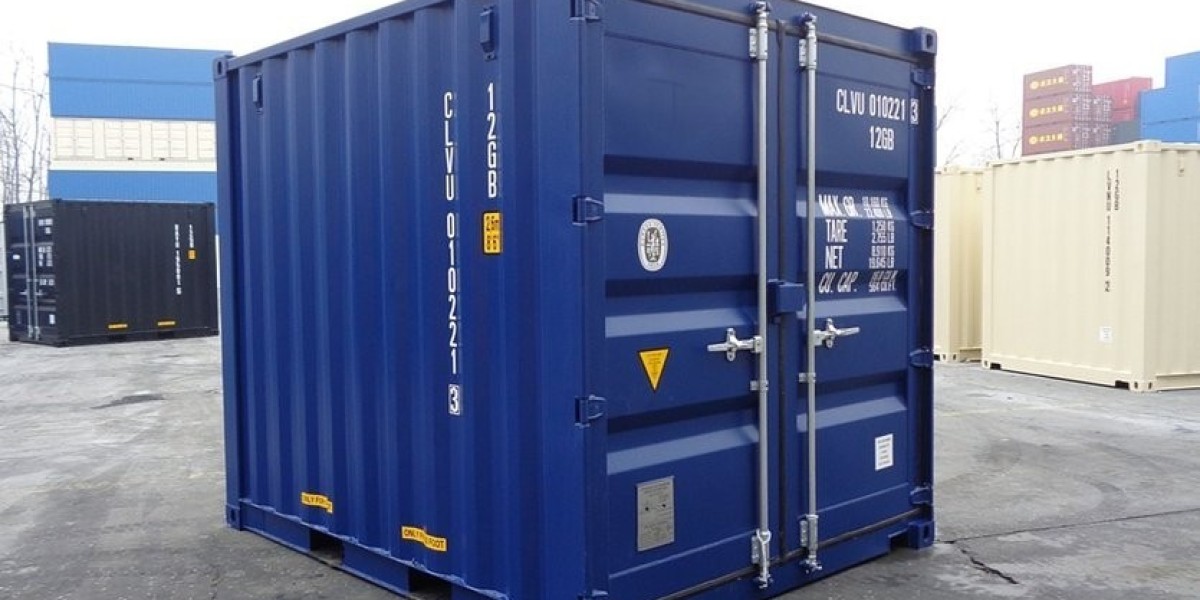An offshore container is a specialized shipping container that is designed for the purpose of transporting cargo to locations offshore. The containers must be built to strict manufacturing standards and have an DNV safety rating of 2.7-1.
These containers can be used to store equipment or to provide accommodation for offshore crews. They are sturdy enough to withstand the constant pounding of ocean waves and winds. They are also durable and adaptable which makes them a good choice for any job.
Safety
Shipping containers must be built to strict standards before they are able to be used offshore. These containers must be built to accommodate specific equipment and machinery used in offshore operations. They must also endure diverse environmental conditions. They must be inspected for structural blueprints according to standard requirements and undergo production process inspections to ensure that the qualifications of the welder are met and that welding processes are in line with standards. They should also be tested for durability in extreme temperatures and be strengthened with a special paint layer to ward off corrosion. This extra layer of protective coating increases their lifespan and allows them to stay in service for many decades.
Offshore containers are designed to meet a variety of requirements, from temporary housing to workshop space. They are typically used to transport equipment and supplies to offshore platforms, as well as to perform maintenance on machines. Modifications can be made to make them suitable for living quarters that provide an enviable and safe working environment for offshore workers. These units are usually fitted with ventilation and HVAC systems, which ensure that workers remain at a comfortable temperature throughout the voyage.
When choosing a container for your project, take into consideration the capacity of its weight and its expansion capabilities. These factors will determine the capacity of the container's load carrying capacity and how it will be used to transport. They also impact the capacity of the container to stand up to rough seas and saltwater that can be corrosive. If your project requires a container for the storage of hazardous substances, it must be compliant with the International Maritime Dangerous Goods code.
Another crucial factor in assessing the security of offshore containers is ensuring that they have an DNV 2.7-1 certification. Det Norske Veritas is a global leader in quality assurance and risk-management. They came up with this certification. DNV 2.7-1 conformity guarantees that the container meets the strict safety and manufacturing standards required to be used offshore. In addition many offshore containers are ATEX Directive compliant, which reduces the chance of explosions. This certification is especially important for containers that will be used in potentially explosive environments, such as those containing steam, gases dust or steam.
Customization
There are a variety of customization options available for offshore containers, which allows them to be customized to meet specific needs. Modifications may include racks for equipment, ventilation or other specialized fittings. Modifications can be made to ensure compliance with regulations and decrease the possibility of penalties or other issues. Additionally, these containers are designed to withstand the harsh offshore environment, ensuring that they will be secure and safe during transport and storage.
Offshore containers are a versatile and cost-effective option to transport and store equipment and other supplies. They are able to withstand extreme conditions in the marine environment such as rough seas and high winds. This lets them protect important equipment and materials from damage during transportation and storage and reduce the cost of repairs and replacements. They can also be transported effortlessly from shore to ship or from rails to trucks. This makes them an efficient and cost-effective option for shipping and storage in the oil and gas industry.
To make sure that the DNV container meets your needs examine the condition, specifications and dimensions. Also, make sure that the container is certified to standards such as DNV 2.7-1 or EN 12079. Check for features like frames that have forklift pockets as well as frames with ISO corner castings. These are essential for safely moving containers from ships to platforms.
The versatility of offshore containers can be enhanced by converting them into dwelling spaces or workshops for employees in the oil and gas industry. These containers can be outfitted with all the tools and equipment required to complete maintenance tasks. They can also provide a comfortable space for workers to stay during drilling activities. Additionally, they can be fitted with tools and equipment for carrying out emergency response activities.
Offshore containers are an excellent way to keep expensive equipment and supplies safe and accessible in the arduous offshore environment. These containers are robust and can withstand harsh conditions in the marine environment. They also guard the contents from loss or damage. This could reduce the efficiency of operations. They can also be equipped with surveillance and locking mechanisms to increase security.
Efficiency
Offshore containers are used to transport tools, equipment and personnel to offshore platforms and rigs. They are typically constructed from durable, steel-lined material to withstand the harsh conditions of marine environments off the coast. They are equipped with a variety features to protect the equipment during transport or storage, such as tie-down points and locking mechanisms. They are also checked and certified to meet safety requirements by classification societies such as DNV.
Another benefit of offshore containers is that they are affordable when compared to other modes of transportation. Helicopters are often used to transport goods and personnel to offshore platforms and rigs, but they can be expensive and take longer than an offshore container. In addition they are not able to transport as much cargo as an offshore container. Offshore containers are also more reliable than helicopters, which can experience mechanical problems that can delay flights and cause significant delays.
Additionally, offshore containers are designed to meet strict standards and regulations. This ensures that they are sturdy and safe, making them a more efficient storage and transportation alternative to standard shipping containers. They can also be more easily modified than other kinds of shipping containers, allowing businesses the ability to add shelves and racks to meet the needs of specific customers.
Containers for shipping offshore can be converted into living spaces which allow offshore workers to live comfortably and safely while on the job. They have bathrooms, kitchens, and recreational areas, which ensure that workers have everything they need to complete their job. It is important to provide a comfortable environment for workers who work on offshore platforms and rigs for weeks or months at a stretch.
In addition to providing comfort for workers on offshore, offshore containers can be used as workshops and maintenance facilities. They are equipped to facilitate efficient maintenance with tools, equipment, and work benches. This can help businesses save money by cutting down time and making repairs less costly.
Offshore accommodation containers are transported to offshore areas by barge or ships. They are usually exposed to harsh marine environments and are lifted onto oil platforms by cranes, which put more stress on the structure. They are therefore constructed with more structural strength and have a single lift point instead of corner castings. They are therefore better suited for high-impact loads and reduce the risk of collisions with other vessels or the vessel's body.
Cost
Offshore containers are a cost-effective and efficient way to transport goods to remote locations. They are designed to endure harsh maritime conditions, and offer an array of options for customization to meet your specific needs. From basic storage to full-scale accommodation they can be adapted to meet your requirements. Offshore containers can also be converted into workshops or maintenance facilities, which reduces the time and expense required to make repairs and upgrades. This flexibility is essential in the offshore industry, where rapid deployment is crucial to ensure operational efficiency.
The initial purchase of an offshore container may be costly due to the quality of the material and specialized engineering design. However, the premium materials and sturdy design help reduce the cost of recurring expenses through prolonged longevity and endurance. Regular maintenance and certifications ensure compliance and continued functionality within corrosive environments.
Another benefit of offshore containers is their ability to prolong the shelf life of perishable products during transport. Containers that are reefer, in contrast to traditional methods of transportation that can drastically reduce product quality ensure the proper humidity and temperature levels to prevent contents from spoilage. This is a major benefit for companies who export products with a limited shelf life, as they can reach new markets while preserving their original quality.
Offshore containers are an ideal option for transporting equipment to offshore vessels and offshore rigs. They can be used to store a range of equipment, including tools and spare parts. They also provide a secure environment, shielding the equipment from extreme weather conditions and providing accessibility when required. Additionally, they're an affordable alternative to helicopters that can be used to transport items to remote offshore locations.
Offshore containers are commonly used to transport food, provisions, water, and other essentials to offshore platforms and vessels. Offshore operators can safely transport waste using offshore containers. They can also be utilized to provide temporary accommodation for workers on remote offshore sites. They can also be converted into workshops and maintenance areas, which save time and money by not having to build permanent facilities.








